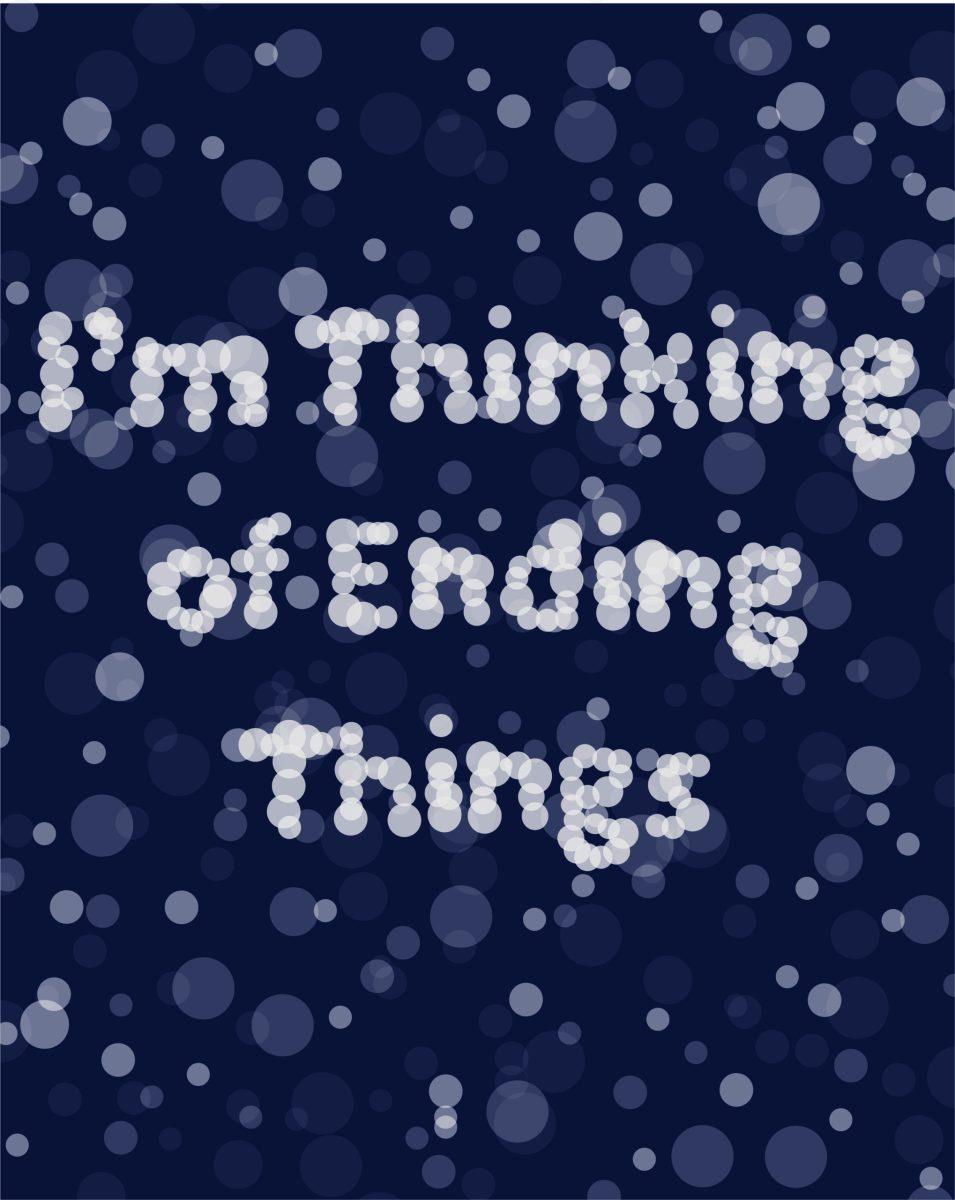
“I’m Thinking of Ending Things” had been over for ten minutes, and I racked my brain for any explanation to try and make sense of the last two-and-a-half hours. Despite the film’s clever cinematography and eccentric editing style, the hodgepodge of random conversations and abnormal occurrences failed to tie together in a coherent manner.
The film’s biggest selling point is director Charlie Kaufman, who also directed “Synecdoche, New York” and wrote the screenplay for “Eternal Sunshine of the Spotless Mind.” The movie, adapted from Iain Reid’s novel of the same name, stars Jessie Buckley and Jesse Plemons. In addition, Toni Collette of “Hereditary” plays yet another creepy mother while David Thewlis, known for his role as Remus Lupin in the Harry Potter franchise and Sir Patrick in “Wonder Woman,” acts as the father.
While on a lengthy car ride to meet her boyfriend’s parents, the intellectual Lucy (Buckley) silently considers her doubts about their relationship. She’s thinking of ending things between them. Upon their arrival, it’s clear that something is “off” about the family, as they defy all typical social conventions and seem to inexplicably switch their appearance from one age to another throughout the night, which somehow doesn’t alarm any of them in the slightest. Lucy and her boyfriend Jake (Plemons) then leave for another car ride home, which is briefly swapped for occasional scenes of a seemingly unrelated high school janitor’s life. Still following? Because I sure wasn’t.
While the movie was advertised as a horror flick, it’s much better approached as a psychological thriller, a mistake I made as I waited for the jumpscares that never arrived. At first, the film is bizarre and unnerving in an effort to keep the audience intrigued. But eventually, the whole plot and even the concept of time itself flies out the window. With a lack of any clear clues to explain the movie’s purpose or lead the viewer in the right direction to interpret the events, Kaufman’s attempt at a thought-provoking puzzle ends up leaving the viewer mentally exhausted.
Kaufman sprinkled themes and insights on various topics throughout the film — such as aging and artistic expression — but any connection between these moments is a string much too thin to notice. The basic plot is punctuated by academic discussions, but they often become too scholarly and difficult for the average viewer to follow. In essence, most viewers will find themselves zoning out as the scene drags on for 10 minutes at a time.
In an [interview](https://www.indiewire.com/2020/09/charlie-kaufman-explains-im-thinking-of-ending-things-1234584492/) with IndieWire, Kaufman expressed his hesitance at explaining his films to the audience. “I let people have their experiences, so I don’t really have expectations about what people are going to think. I really do support anybody’s interpretation,” Kaufman said. Sure, this is a creative sentiment to hold, assuming that the film is coherent enough for most viewers to draw an interpretation. With “I’m Thinking of Ending Things,” however, it would take multiple viewings to draw out any type of explanation.
With that said, Kaufman does achieve a uniquely unnerving tone with creative filmmaking techniques. It’s a visually dynamic piece, with the camera positioned outside the car in many of the car trip scenes, allowing the windshield wipers and blizzard of snow to separate the viewer from the characters in a manner not often present in films. Rather than inviting the audience to view the story from the characters’ perspective, Kaufman ensures that the audience stays an objective observer of the story.
The peculiar editing also enhances the eccentricity of Kaufman’s creation. It’s purposefully choppy and noncontinuous, as dialogue and voice-overs often overlap one another, the characters subtly switch positions from one shot to the next and their appearances shift ever so slightly as the scene goes on. It quite literally feels like you’re going crazy.
Furthermore, the actors deserve recognition for their ever-changing performances of the characters. During a dinner scene with the family, each person switches moods and attitudes in half a heartbeat, defying all social conventions in an unsettling fashion. Buckley, Plemons, Collette and Thewlis are able to play not only one character but at least four different versions of themselves with seamless transitions between them. Still, their dynamic performances cannot save the film from lacking any sensible explanation.
I’m sure an extensive film analysis of “I’m Thinking of Ending Things” could draw out a complex symbolic meaning that explains the chaotic jumble of events. But most viewers will find it much too frustrating to analyze, and the ambiguity will leave audiences stumped and bewildered.
Honestly, I’m thinking of ending things too — “things” being my attempt to decipher this movie.
_Edited by George Frey | [email protected]_